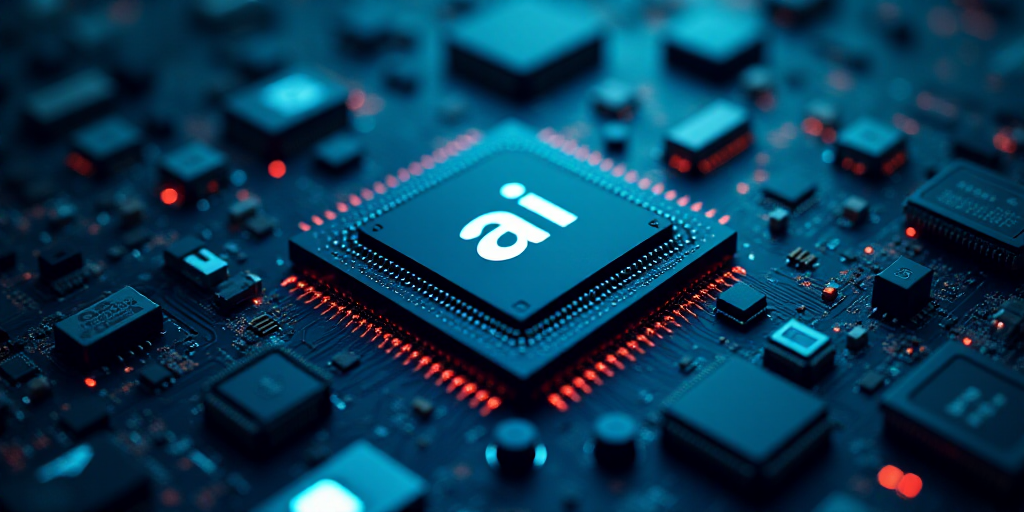Massive Investments in AI
Investments in artificial intelligence (AI) continue to soar worldwide; they are projected to reach $1.5 trillion this year, according to US research firm Gartner, and over $2 trillion by 2026, nearly 2% of the global GDP.
Despite low returns, “there is no doubt among investors that AI is the most revolutionary technology,” comparable to electricity usage, stated Denis Barrier, director of venture capital firm Cathay Innovation.
The “Silicon Valley” mindset focuses more on seizing opportunities than worrying about risks, he added.
Geopolitical tensions are driving this frenzy, primarily to build energy-intensive data centers.
- From 2013 to 2024, private investment in AI reached $470 billion in the US (almost a quarter of that in the last year alone). China, the rival superpower, followed with $119 billion, according to a Stanford University report.
- Only a few large companies dominate the market, with OpenAI leading the charge.
In March 2025, the parent company of ChatGPT raised approximately $40 billion, boosting its estimated valuation to around $500 billion, according to analysts.
“Circular Funding”
OpenAI, led by Sam Altman, is at the heart of an AI investment boom. It oversees the Stargate project, which secured $400 billion of the planned $500 billion for data centers in Texas by 2029.
The consortium, backed by the White House, includes Softbank, Oracle, Microsoft, and Nvidia.
- Nvidia, which closed over 50 venture capital deals in 2024, according to PitchBook data, is often criticized for practicing “circular funding,” investing in startups that use the funds to purchase its chips.
- Some analysts criticize this as a behavior that fuels a bubble prone to burst.
- The OpenAI deal “will likely exacerbate those concerns,” stated Stacy Rasgon, Bernstein Research analyst.
- In the first six months of 2025, OpenAI generated around $4.3 billion in revenue, reported The Information this week.
Unlike cash-rich companies like Meta or Google, OpenAI and competitors such as Anthropic or Mistral must be creative in funding searches to cover the gap.
AI technology advocates believe OpenAI’s revenue explosion is just a matter of time: its ChatGPT assistant now serves 700 million people, nearly 9% of humanity, in less than three years since its launch.
“Many Losers Ahead”
However, nothing is guaranteed.
Feeding the AI computational appetite will cost up to $500 billion annually in global investments in data centers by 2030, requiring $2 trillion in annual revenue for expenses to be viable, according to Bain & Company.
- Even with optimistic estimates, Bain projects an $800 billion shortfall for the AI industry.
- OpenAI plans to spend over $100 billion by 2029, meaning it’s still far from profitability.
In the energy sector, global AI’s computational footprint could reach 200 gigawatts by 2030, equivalent to Brazil’s annual electricity consumption or half of the US’s, according to consultancy Bain & Company.
“Even with concerns about a potential ‘AI bubble,’… we estimate the sector is in its 1996 Internet boom phase and definitely not in its 1999 phase before the dot-com bubble burst,” stated Dan Ives, Wedbush Securities analyst.
In the long term, “a lot of money will evaporate, and there will be many losers, just like during the internet bubble, but the internet survived,” added a Silicon Valley investor.
Key Questions and Answers
- Q: How much are we investing in AI? A: Investments in AI are projected to reach $1.5 trillion this year and over $2 trillion by 2026.
- Q: Why are investors so keen on AI? A: Investors see AI as a revolutionary technology comparable to electricity, with immense potential for growth.
- Q: What challenges does the AI boom face? A: Despite massive investments, the AI industry faces a potential shortfall of $800 billion and high energy consumption, which could equal Brazil’s annual electricity use by 2030.
- Q: Will AI investments eventually pay off? A: Long-term optimists, like Silicon Valley investors, believe that despite temporary losses and a potential bubble, AI will persist and grow like the internet did.






